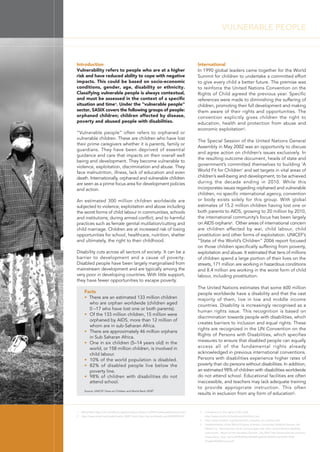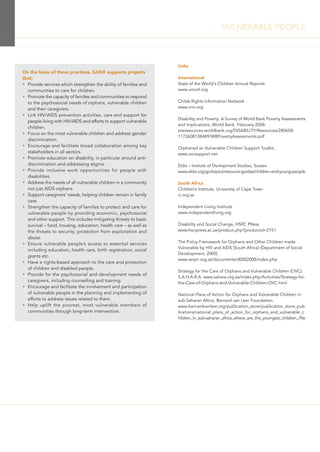This document discusses vulnerable groups including orphaned and vulnerable children, people with disabilities, and the elderly who care for orphaned children. It provides statistics on the large numbers of orphans worldwide and children affected by issues like poverty, exploitation, and lack of access to education. Specifically in South Africa, it notes the high percentage of orphans due to HIV/AIDS and challenges they face living in child-headed households or being cared for by grandparents. Addressing the needs of these vulnerable groups is important for achieving the UN's Millennium Development Goals.





